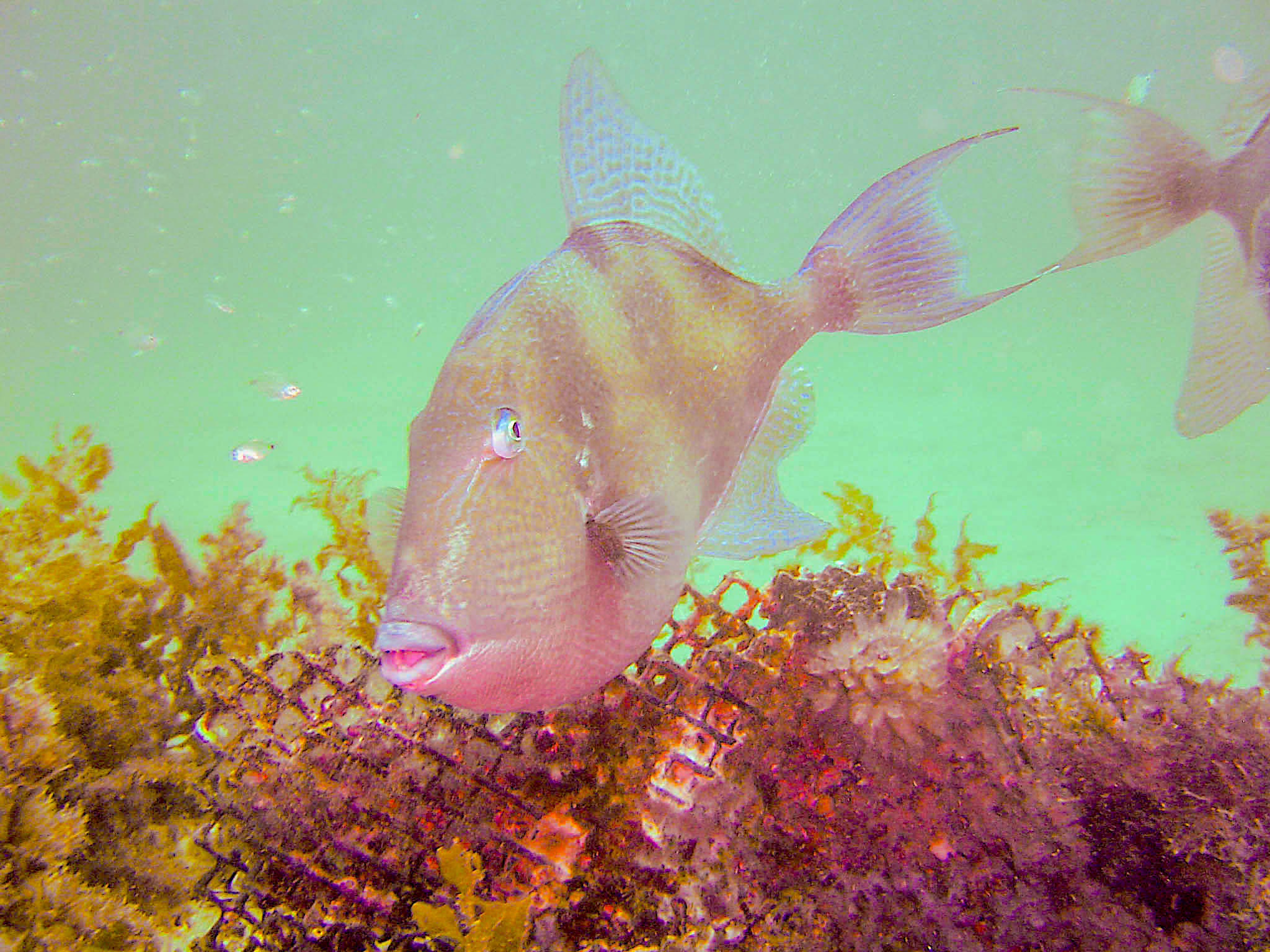How Can We Increase the Numbers of Fish on Artificial Reefs?

Research shows that adding “prey refuge bags” to artificial reefs improves fish populations — and it even raises the chances that anglers will have success.
Research Need
Government and private organizations invest heavily in artificial reefs to enhance fish populations. Although these reefs often are successful for anglers in the short term, the long-term viability of these reef fish populations remains questionable.
Fish predators preferentially consume certain animals that initially settle on the reef structure, leaving a community of bottom-dwelling organisms that is largely unpalatable to these fish predators. The initial boon of fish populations, which can result from both the structure of the reef and from palatable early settlers, appears to decline as the bottom-dwelling animal community changes.
What did we study?
We tested whether we could increase numbers of fish by affixing inside select artificial reefs mesh bags that exclude fish predators but, in theory, allow invertebrate marine organisms to enter, grow, and thrive.
We compared reefs in which we installed prey refuge bags to similar non-bagged reefs using underwater SCUBA fish counts one year after installation and angler catch rates at both one year and three years after installation.
What did we find?
Fish counts were generally higher on reefs with prey refuge bags installed compared to the non-bagged reefs. SCUBA surveys documented higher numbers of six fish species, including spottail pinfish, long-spine porgy, and gag grouper.
On reefs with bags, anglers had higher overall catch rates, as well as higher success rates in particular for each of six different species: black seabass, flounder, sand diver, spottail pinfish, gag grouper, and sheepshead. Increased catch rates occurred both one and three years after the bags were installed.
So what?
The installation of prey refuge bags represents a low-cost addition to artificial reefs that can result in more abundant fish and higher rates of success for anglers for at least three years after deployment.
Reading
Neely, K.L.; Ziegler, T.A.; Peloso, M.; Hooper, M.; O’Briant, C.; Wise, M.; and Rittschof, D. 2021. Enhancing artificial reef fish populations by providing invertebrate prey refugia. Fisheries Research 241:106003.
Funding was provided, in part, by the N.C. Fishery Resource Grant Program administered by North Carolina Sea Grant (Grant No. #06-EP-10).
Summary compiled by Karen Neely, a research scientist at Nova Southeastern University. She is currently studying the impacts of coral disease and how to treat and mitigate those impacts. Neely received her Ph.D. at Duke University Marine Lab.
Lead photo by Mark Hooper.
The text from Hook, Line & Science is available to reprint and republish at no cost, but only in its entirety and with this attribution: Hook, Line & Science, courtesy of Scott Baker and Sara Mirabilio, North Carolina Sea Grant.
- Categories:



